By Cam Delisle
In the wake of her breakthrough third album, Through The Wall, the experimental-R&B auteur reflects on a career-defining year.
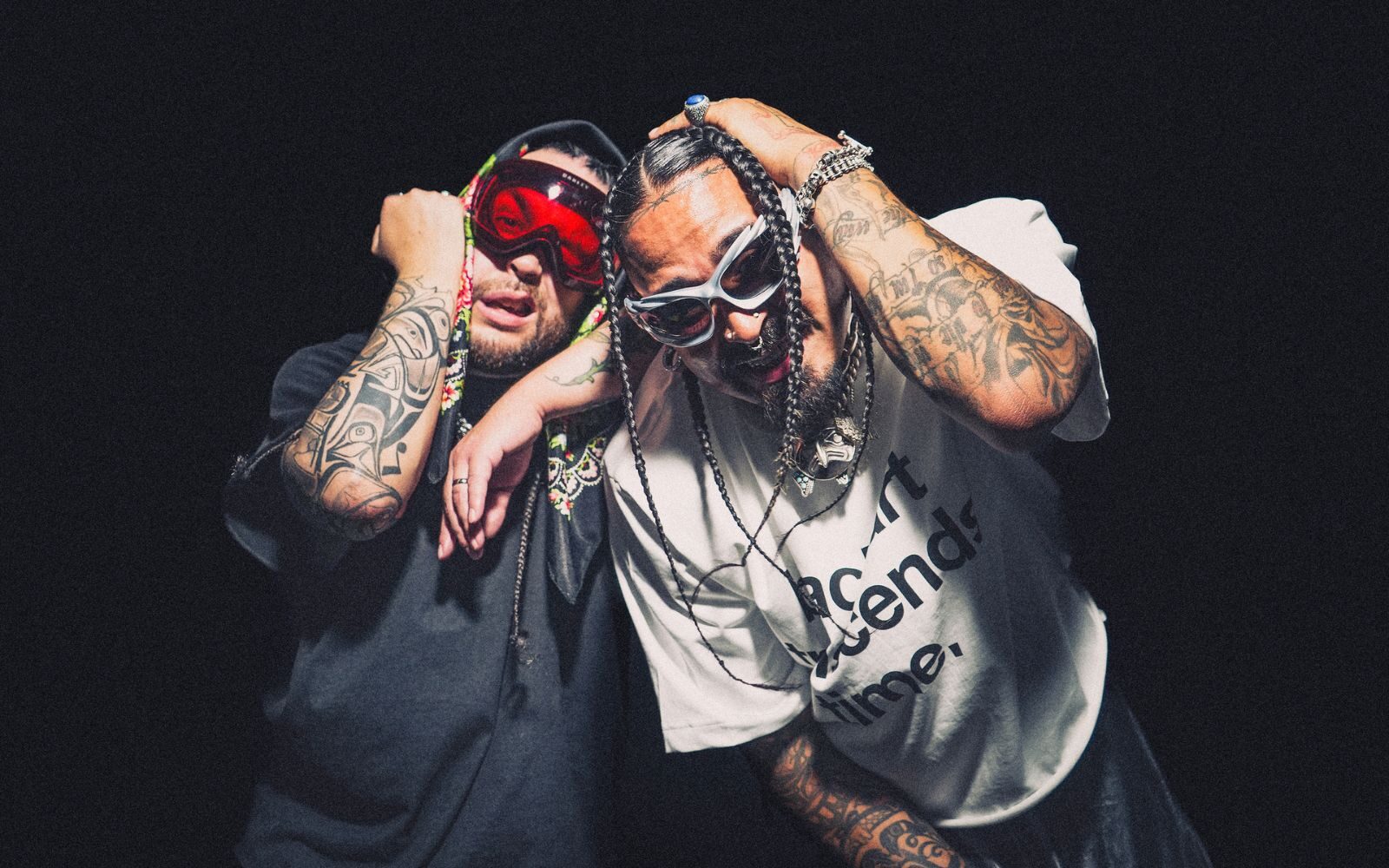
Prado Cafe on Vancouver’s Commercial Drive should have issued a flood warning for the levels of drip that entered the premises when Darren “Young D” Metz and Quinton “Yung Trybez” Nyce stepped through the front door. The rap duo formally known as Snotty Nose Rez Kids look more to the untrained eye like Fashion Icon City Slickers – Metz in a pair of Lifted Anchors pants embroidered with skeleton and flame decals, Nyce sporting JNCO jeans cut into capris and hand-painted Doc Martens boots, decked to the nines in silver statement jewellery, with tattoos below the eye and across the neck reading ‘rezboi’ and ‘savage,’ respectively. The barista compliments their outfits as they place their orders – a sweet cream cold brew and a creamsicle iced latte, flavours as bold as their fits, and not to mention Nyce’s eighth shot of espresso that day.
Since moving from Kitimat to Vancouver nearly a decade ago, the Haisla hip-hop duo have ascended Canadian and international charts with a slew of Polaris Prize and Juno-nominated records. That rise has been rocket-fuelled by an unbridled swag, infusing irreverent lyrics, infectious production, and an aesthetic sensibility that transforms music videos into works of art. In 2017, they recorded their debut full-length, Average Savage, on a defective microphone in a bathroom. This year, they signed to Sony Music, struck a deal with the CBC to make a scripted comedy series based on their lives, and built a private recording studio from scratch.
SNRK’s latest release, RED FUTURE, came to life in that new studio space, where Metz and Nyce could work without the interruptions of their usual home recording set up, or the pressure of an expensive studio session. “We got into such a creative groove on this record,” Metz tells RANGE over a clinking glass of iced coffee. “We were locked in, dialled in. Every day we were just on a mission.” Over this past winter, between non-stop touring, Metz tying the knot, and Nyce welcoming a baby girl into the world, the pair holed up in that studio and churned out a whopping 46 songs, 30 of which wound up on the cutting room floor.
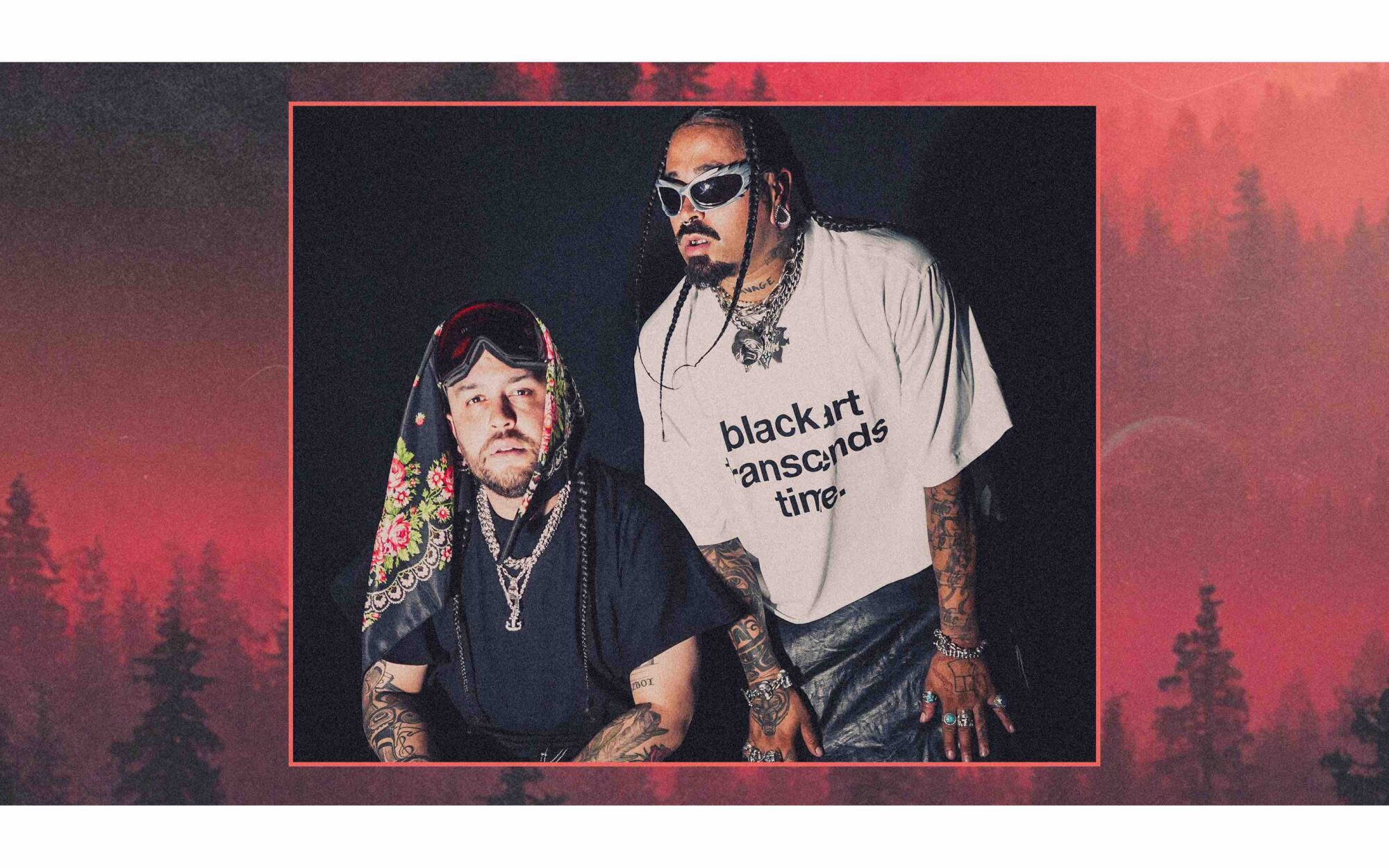
“We had a good support system,” says Nyce of their creative process. “We would check our egos at the door and go into the studio and just be free with everything: free thinking, free speech, free form, creating freely with no restraints.”
“There was no ego whatsoever on this album,” agrees Metz. “If he thought my verse could be better, he would tell me. If I thought his verse could be better, I would tell him. And this is the best thing we’ve ever fucking made.”
RED FUTURE sits atop the shoulders of the rap duo’s accumulated success. From that height, they could take on a scope of epic proportions without losing sight of the raw emotion and signature snark that has defined their work. Their bars bounce atop buoyant production, popping off euphoric anthems with a headbanging edge.
The 16 songs on RED FUTURE unfold like a film with three acts. “Welcome to the World” opens with a laundry list of colonial wrongdoings, “Burn” ushers in ideas for resistance (there’s a clue in the song title), while “Devil’s Club” provides regrowth in revelry. And after rising from the ashes, the denouement delights in imagining Indigenous ascendance.
As a concept, RED FUTURE has been simmering on the back burner since before the pandemic, but the pair have waited for the ideal instance to dish it up for the potluck. “RED FUTURE was always coming and it needed to come when the time was right,” says Nyce. In the meantime, they released albums that felt more appropriate for each passing chapter, until reaching that critical crux when the world seemed ready to receive the message – and they felt emboldened enough to deliver it. “When the rise comes, when the resurgence comes, that’s when RED FUTURE will be here for us. And the time is now for that. We’re at our highest high that we can be at before we drop this album.”
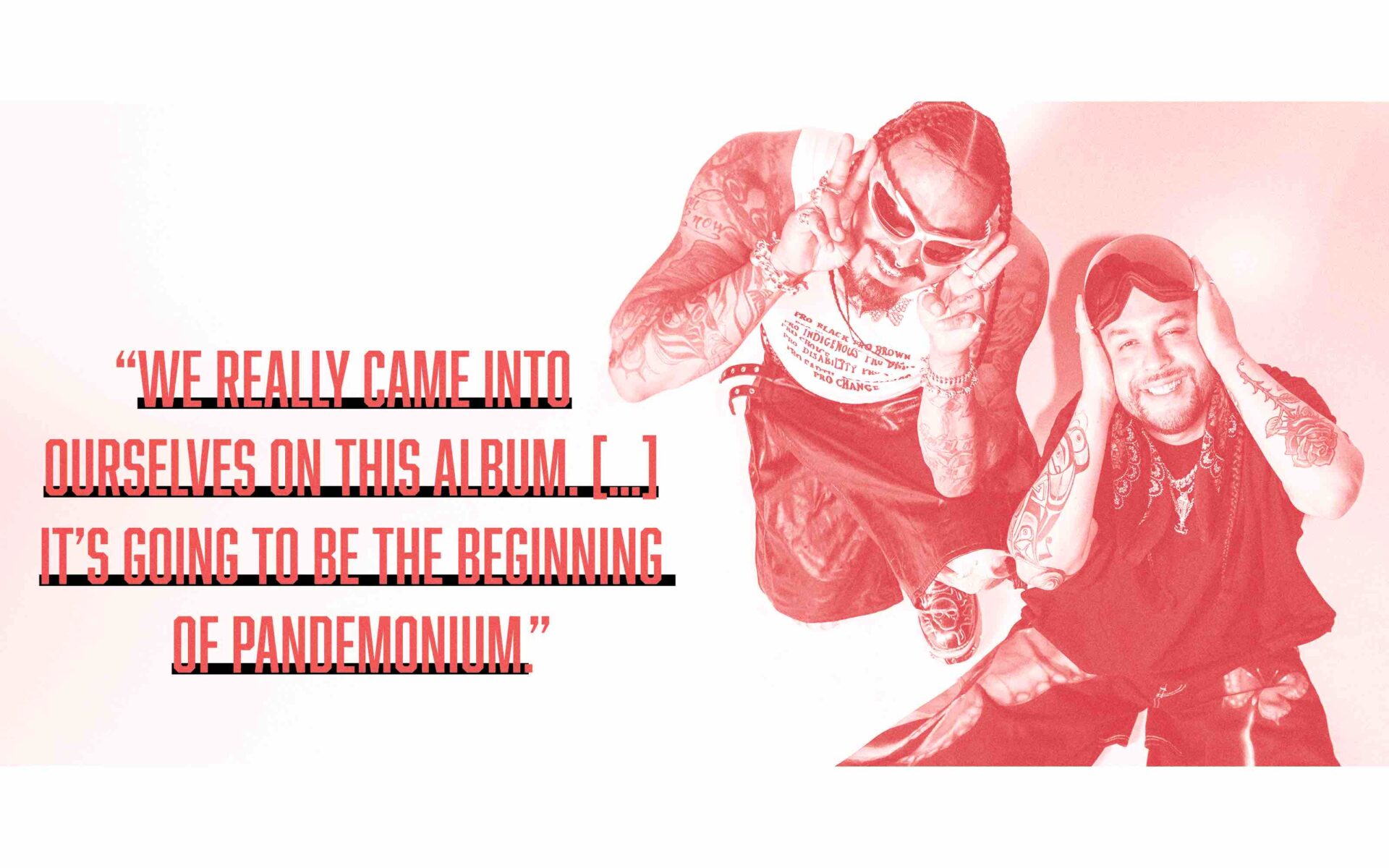
“We’re at a time where the outside world is very intrigued about Indigenous culture,” Nyce continues. “At the same time, because of artists like A Tribe Called Red, because artists like us, Indigenous kids are realising that it’s dope to be Native — you should be proud of who you are, you should be proud of the braids you wear, of the skin tone you have, of the family you’re surrounded by. Right now is a very important moment in time to kind of break into the mainstream for artists like us because society is letting us tell our story the way it was meant to be told and not telling our story for us anymore.”
“When all is said and done, it’s all about setting up those next artists that are gonna take it further than we have so far,” adds Metz. “It’s not about how far we came, it’s about how far we can go, and the sky’s the limit, really.”
SNRK set out at a time before Indigenous music carved a space for itself in pop culture, and at a time before Indigenous issues mattered to most Canadians. They recount how their first show back in Kitimat failed to resonate with the local crowd, whether Indigenous or white. “People didn’t really give a shit. And then we went back two years later, and all those same little white kids, like, lyric for lyric, bar for bar, word for word, front row, it was chaos,” says Nyce with a flash of his grills. “And then one of the principals took us aside and she was telling us what a change she’s seen in the students and how they interact with each other because of starting Snotty Nose Rez Kids.”
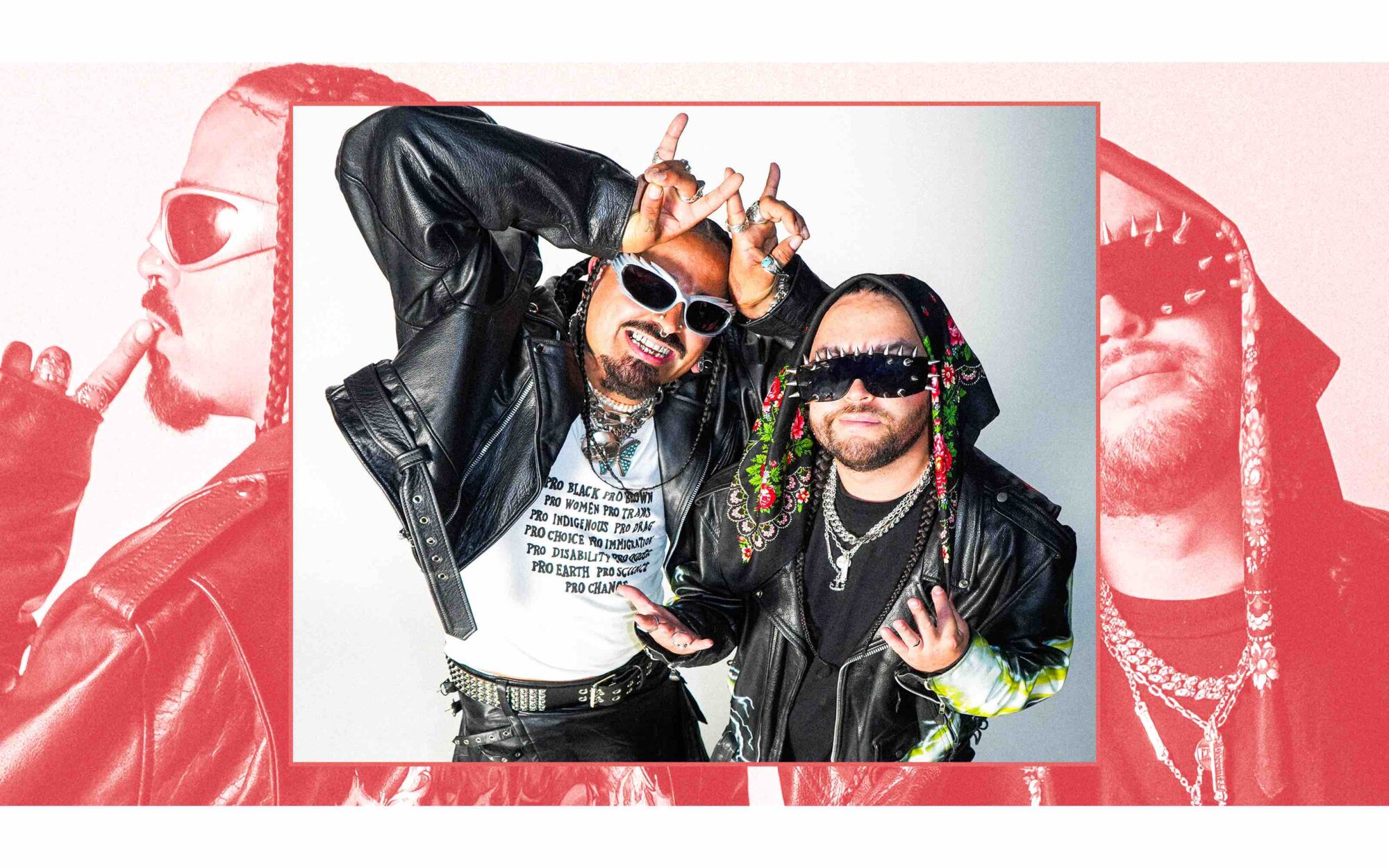
The awareness brought about by Indigenous activism and artistry alike is building momentum. And RED FUTURE encapsulates the energy, intelligence, power, and possibility held in this cusp, the euphoria and suspense of surfing the edge of this historic wave. Nyce and Metz moved to Vancouver when the Idle No More movement was pushing Indigenous resistance onto the national stage. Since then, dozens of movements across the continent have kept the spotlight on this reality and Indigenous alternatives. Now, we have Hollywood heavyweights like Martin Scorsese bringing Indigenous stories to the big screen, which, in turn, has given Nyce and Metz the chance to have a show on CBC.
“These are small steps forward, but small steps are better than no steps,” says Metz.
“It’s like a snowball effect — once the ball starts rolling, it just keeps getting bigger and bigger,” adds Nyce. “We have more power than the government wants us to think we have, and that comes in numbers. And all the work that we do is to make an easier life for the generations coming after us. To let them know at a young age what it really means to be First Nations. And there’s a lot of power in that.”
According to Nyce, SNRK lived that process of self-discovery and empowerment through their music. “I was always timid growing up and so was he, until we found our calling. We were always the quiet ones and now our energy when we walk in a room can’t be ignored. And it’s because of the work that we put in ourselves,” he says. “A lot of people always tell us to check our ego at the door. But we don’t have an ego, we have confidence. It’s a late-found confidence, and I can never check that at any door.”
“We really came into ourselves on this album,” adds Metz. “RED FUTURE is the big one. It’s going to be the beginning of pandemonium. We’ve been working our whole career for this, to be at this level. And we feel like we’re still just getting started. The best is yet to come.”
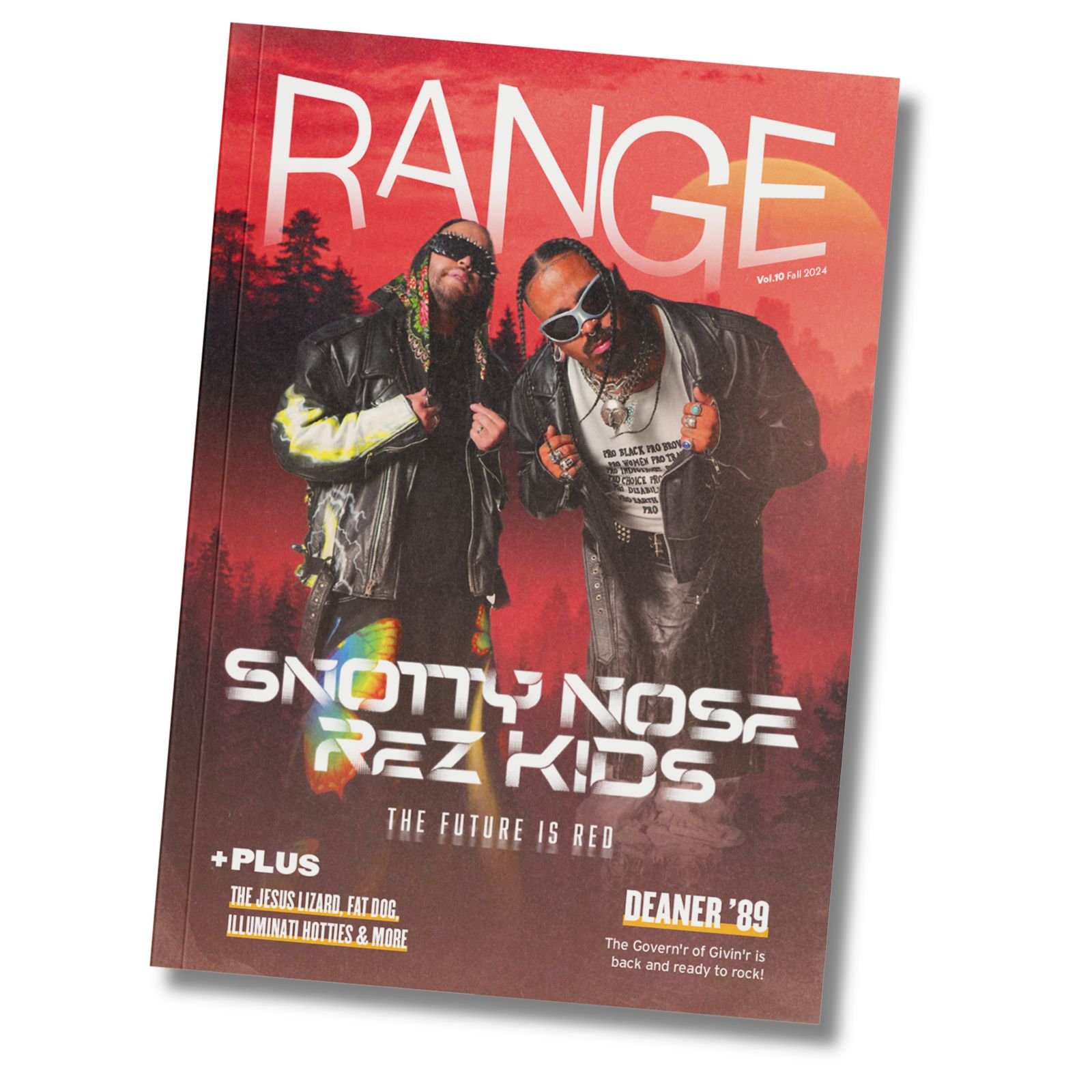
By Cam Delisle
In the wake of her breakthrough third album, Through The Wall, the experimental-R&B auteur reflects on a career-defining year.
By John Divney
Still processing their debut album, Vancouver’s latest art-rock unit proves collaboration is the new rebellion.
By Cam Delisle
The elusive Kevin Parker soundtracks the self-medicated search for bliss on his fifth album, Deadbeat.